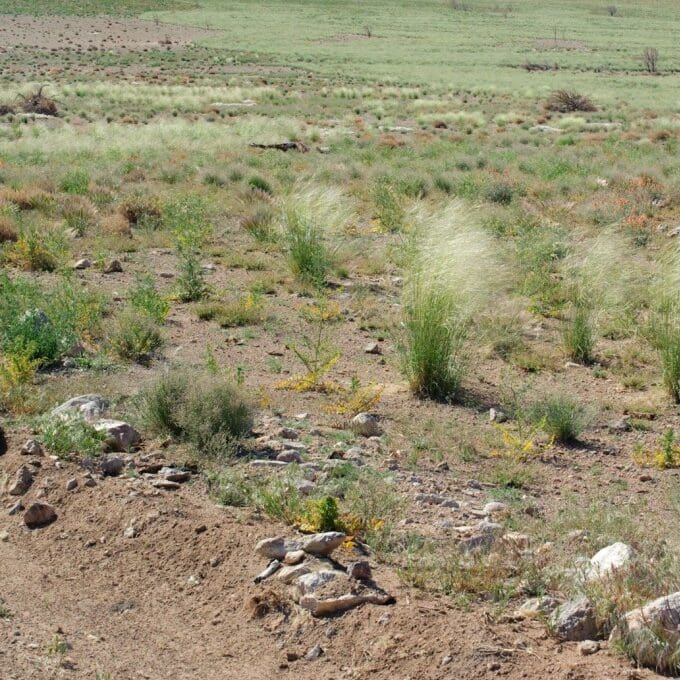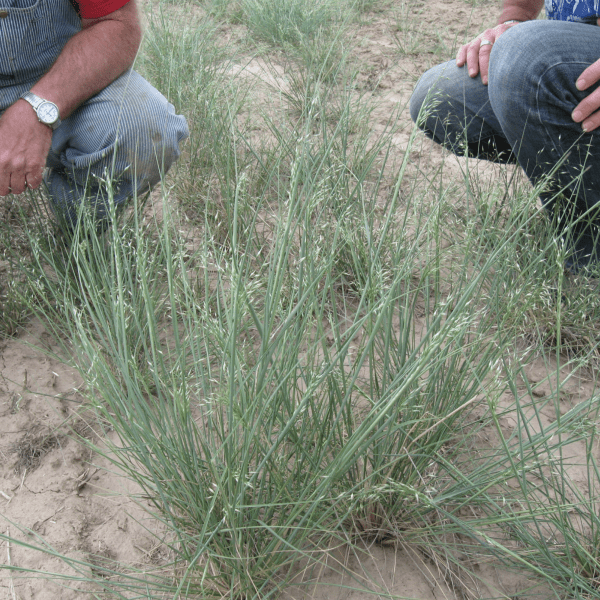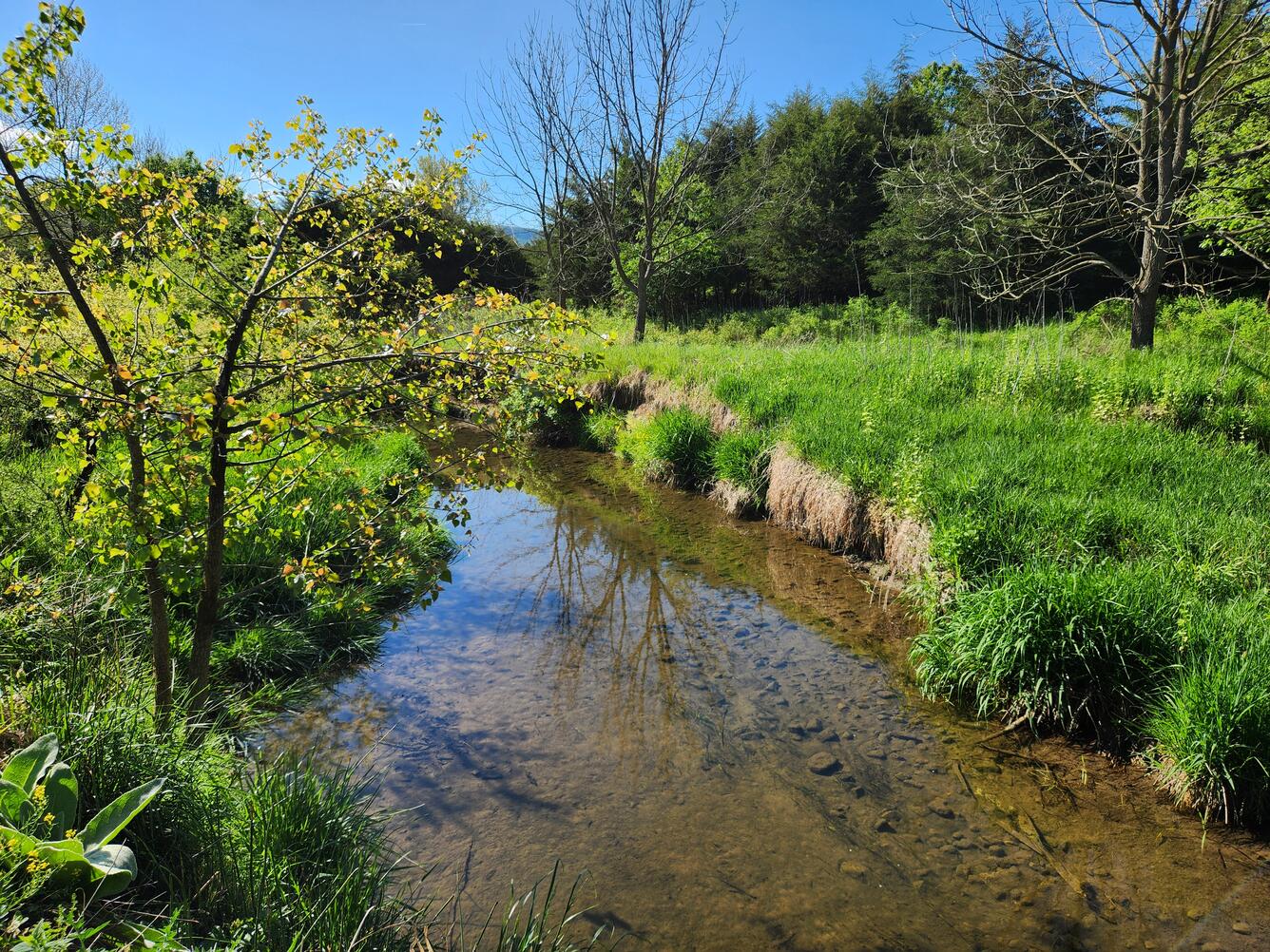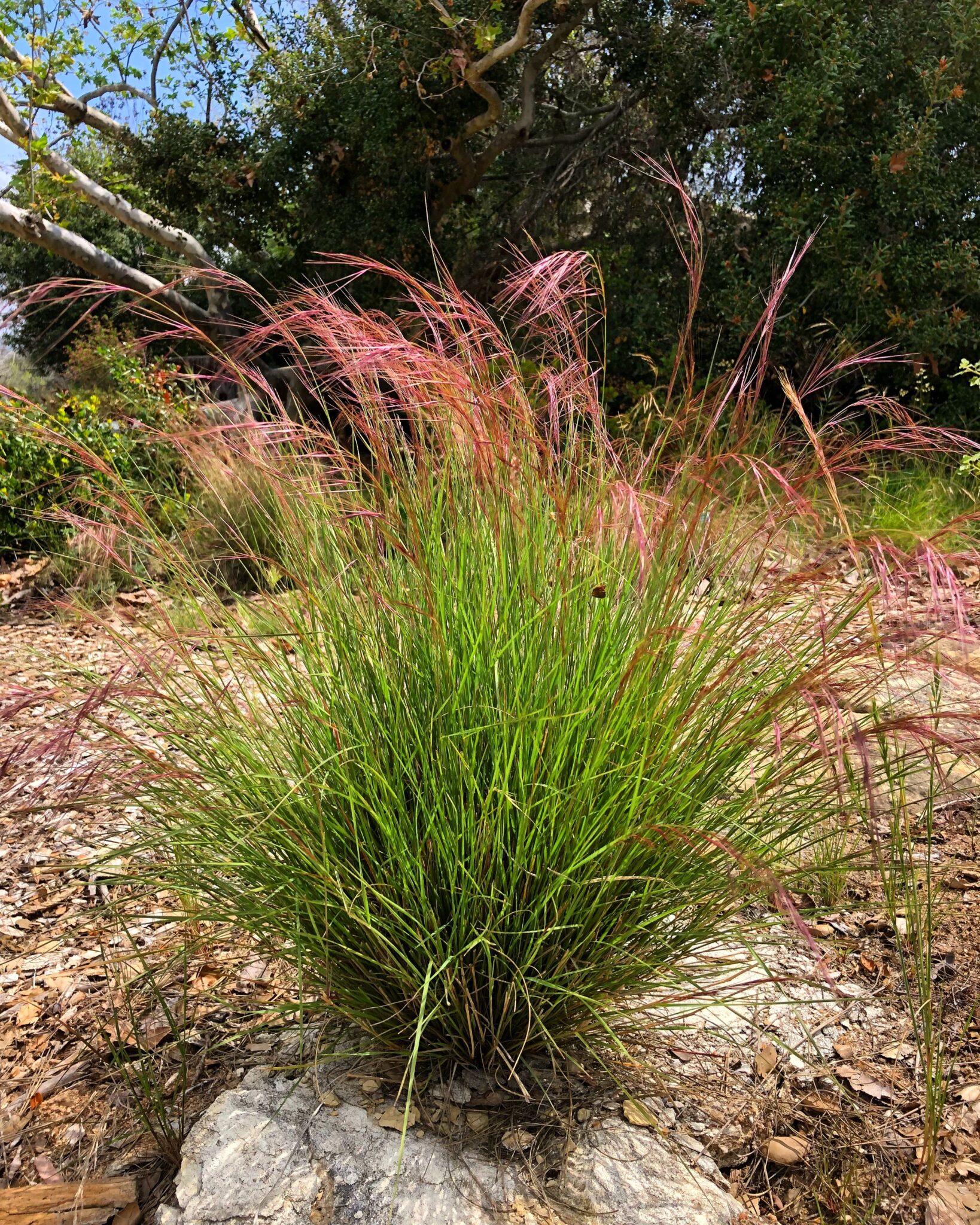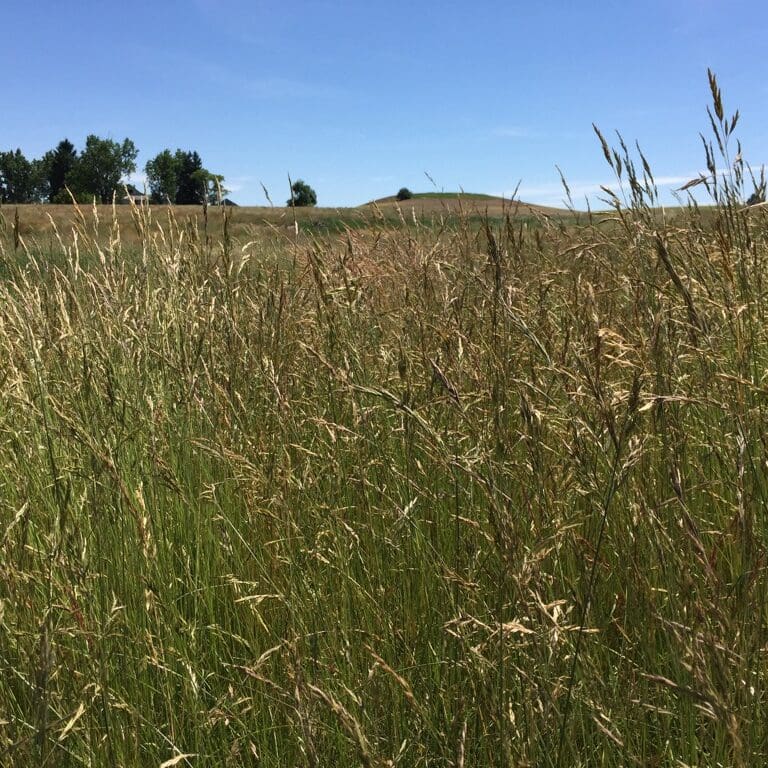Rimrock Indian Ricegrass
 $11.35 – $19.50
$11.35 – $19.50 - Scientific name: Orzhyopsis hymenoides
- A widely adapted native grass
- Drought tolerant, found on most range sites
- Excellent in sandy, gravelly, and shallow soils
- Valuable for domestic livestock and big game animals
- Excellent source protein for upland game birds
- Highly valued for wildlife habitat improvement
- Widely used on disturbed sites, range mixes
Min. to Max. Annual Precipitation
24in.
Average Max. Height
A widely adapted native grass of the intermountain west. Drought tolerant and found on most range sites. Grows at elevations between 3,000 and 10,000 feet and adapted to a wide variety of soils. Most frequently occurs in sandy, gravelly, and shallow soils, frequently found in dunes. Valuable grass for domestic livestock and big game animals. Excellent food source of high protein food for upland game birds. Highly valued for wildlife habitat improvement, disturbed sites, mine reclamation and range mixes.
Rimrock Indian Ricegrass: Earlier seed shattering than Nezpar or Polama. Establish well on many adapted sites in the Great Basin and Intermountain West. It is very winter hardy and has a broad climatic range of adaptation. It can be found at elevations ranging from 2,000 to 10,000 feet and grows best in areas averaging 8 to 14 inches of annual precipitation. It has been seeded in areas with as low as 6 inches of rainfall and successfully reproduced. Rimrock has an area of adaptation extending east of the Rocky Mountains from Montana to southern Colorado, into the western-half of the Dakotas and Nebraska, and north through the prairies of southern Alberta and Saskatchewan. Does well in sandy soil averaging 10 -14 inches annual precip. ‘Rimrock’ was collected in 1960 from the bench atop the rims north of Billings, Montana. The USDA NRCS Plant Materials Center (PMC), Bridger, Montana; Agricultural Research Service (ARS), Logan, Utah; and the Montana and Wyoming Agricultural Experiment Stations released Rimrock in 1996, primarily because of its ability to retain seed better than ‘Nezpar’ or ‘Paloma’.
Indian Ricegrass (Achnatherum hymenoides) is the state grass of Utah. It is one of the more widely adapted native grasses of the intermountain west rangelands. It is drought tolerant and found on most range sites. It grows at elevations between 3,000 and 10,000 feet and is dapted to a wide variety of soils. It most frequently occurs in sandy, gravelly, and shallow soils in the upland and semi-desert climatic zones. It is also adapted to soils high in lime. It is moderately salt and alkali tolerant. It does not do well on wet or poorly drained soils. This species is an excellent choice for well drained, sandy soils and is frequently found in dunes and on sandy desert plains.
Indian Ricegrass (Orzyopsis hymenoides) is a key species on Utah foothills and semi-desert range. It is high in protein and is one of the more valuable grasses for domestic livestock and big game animals, providing excellent forage for spring and summer use. It is especially valuable for winter grazing because the plants cure well and lower plant parts remain somewhat green. Due to the abundance of plump, nutritious seed, it is an excellent food source for upland game birds, particularly mourning doves, pheasants and others. The seeds are high in protein.
Indian Ricegrass is a very valued and desired species for wildlife habitat improvement, disturbed sites, mine reclamation and range mixes.
Indian Ricegrass is also know by the scientific synonyms Stipa hymenodies and Orzyopsis hymenoides. It was used by various Indian tribes to make flour.
Synonyms: Oryzopsis hymenoides, Stipa hymenoides, Achnatherum hymenoides
***click the “Quick Plant Facts” tab above for more Information.
‘Rimrock’ Indian Ricegrass NRCS Plant Release
‘Rimrock’ Indian Ricegrass NRCS Plant Release
PDF version of NRCS Plant Guide and Fact Sheet
Citation: USDA-Natural Resources Conservation
Service, Bridger Plant Materials Center. Bridger, Montana 59014. Revised April 2013.
Indian Ricegrass NRCS Plant Guide and Fact Sheet
Indian Ricegrass NRCS Plant Guide and Fact Sheet
PDF version of NRCS Plant Guide and Fact Sheet
Prepared By & Species Coordinator: Daniel G. Ogle, Plant Materials Specialist USDA, NRCS, Boise, Idaho
Helpful Links
Additional information about this product can be found on the academic websites linked below.
Synonyms
Many plants have more than one common and scientific name. We've listed a few of them below.
- Rimrock Indian Ricegrass
- Achnatherum hymenoides
- Oryzopsis hymenoides
Who is Great Basin Seed?
Great Basin Seed is a seed company that specializes in seed sales and consultation for home, ranch, farm, range and reclamation. We have been a leader in the seed industry since 1974.
Our History
We've been in the seed business since 1974.
What We Offer
We offer seed for home, farm, ranch, range and reclamation projects.
Meet the Gang
We have the best employees in the world! We are proud of the work they do, and trust them to serve you!
Right: Company founder Lloyd and his wife Paula Stevens in a wildflower seed production field circa 1977
Quick Plant Facts
| Common Name: | Indian Ricegrass |
|---|---|
| Scientific Name: | |
| Old Scientific Name: | |
| Lifespan: | |
| Origin: | |
| Plant Type: | |
| Seeds per Pound: | |
| Growth Height: | |
| Root Form: | |
| Planting Rate: | |
| Min. Precipitation: | |
| Best Time to Sow: | |
| Max Sowing Depth: | |
| Growth Season: | |
| Sun & Shade Tolerance: | Full or Partial Sun |
| Elevation of Occurance: | |
| Available Varieties: | |
| Hardiness Zones: | |
| Select a Package Size and Quantity | 8 oz. Pouch (0.50 lbs.), 1 lb. (by the pound) |
